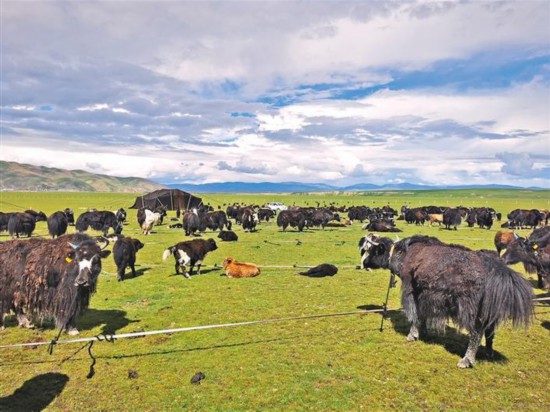How Hangzhou has helped Nagchu with sustainable development
Editor's Note: Since Hangzhou kicked off its poverty-relief project in Nagchu, Southwest China's Tibet autonomous region 25 years ago, nine groups of 44 officials have helped the remote city make strides in sustainable development.
Let's take a look at some hard figures that reflect the progress Nagchu has made.
Educational support
The enrollment rate of school-age children in Nagchu has jumped from 22.5 percent in 1995 to almost 100 percent currently. The success was achieved by Hangzhou setting up dozens of primary and middle schools over the years, which have become the most eye-catching buildings in the area.
In late August, Nagchu's Seni district will send its first group of 30 students to study at a middle school in Hangzhou for 3 years, a milestone for the entire Tibet region.

A pasture in Nagchu not only feeds local animals but also residents. [Photo/people.com.cn]
Industrial support
Nagchu is a cold highland area with a purely pastoral lifestyle, hence the nickname "hometown of yaks".
Through extensive research, Hangzhou officials worked out a development plan and encouraged Nagchu to develop its animal husbandry from a traditional style of self-efficiency into a more industrialized and eco-friendly system.
Local husbandry is now managed by a leading enterprise, and various production bases are in charge of the deep processing of dairy products, which are initially bought from local dairy farmers and then undergo quality tests in professional labs.
Nearly 20,000 farmers from 76 villages in Nagchu have established stable supply relationships with the bases, which in turn have also employed 476 local residents, generating annual revenue of 10 million yuan ($1.45 million) in total.
Potatoes, carrots and other industrial crops planted in Nagchu pastures not only feed local animals but also residents.
-
'Nice' to meet you, Hangzhou
May 6, 2024



